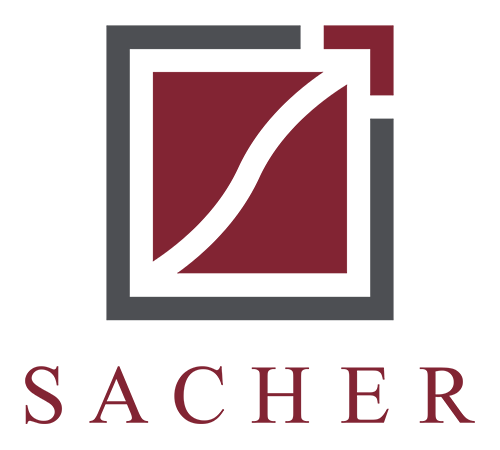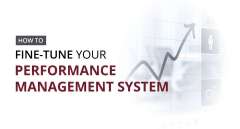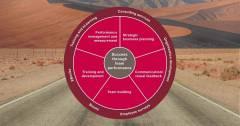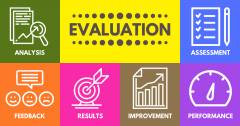Harold Monty Sacher
You need performance not just training!
No goals, no glory!
Individual human potential is limitless, and as organizations are made up of human beings, the potential for any organization to achieve its goals is also limitless.
Total stakeholder satisfaction
If an organization or team is to perform, the people who have expectations or place demands on that system have to be satisfied.
Many organizations focus on one group of stakeholders at the expense of other groups.
For example, after the Second World War, many organizations in countries such as Australia, the USA, and Canada still had enormous resources, growing internal and external demand, and the commercial advantage of infrastructure still intact. There was little global competition and organizations could thrive by concentrating on shareholder returns. Other organizations in countries such as Japan, deprived of these competitive advantages, strived for financial returns by concentrating on customer satisfaction and quality.
Few organizations would remain competitive in today's world without satisfying rising employee expectations. More and more employees are demanding quality of work-life, greater meaning in their work, autonomy, and a small organizational team to which they can belong. This organizational team serves as the organizational equivalent of the family unit. By focusing on the needs of employees, the most competitive organizations have incorporated the best aspects of home life into the workplace.
Many organizations are replacing historically adversarial relations with their suppliers with a more committed, cooperative relationship. This can contribute to a sustainable competitive advantage and the achievement of major goals for both parties.
Government and regulatory groups are also stakeholders whose expectations and demands have been steadily rising, particularly in the areas of the environment and safety.
So, organizations are arriving at the concept of total stakeholder satisfaction. To optimize the organization system there needs to be an emphasis on the rigorously measured demands and expectations of all stakeholders.
The balanced scorecard is a structured way of building a performance measurement system that links outputs, measures, and targets directly to strategy. The development of outputs, measures, and targets are necessary to implement strategy and provide total stakeholder satisfaction. Once the stakeholders have been identified, the next step is to find out exactly what the stakeholders’ expectations are.
It should be emphasized that all stakeholders care about the welfare of the entire organization. So while stakeholders are identified with particular outputs, they are all generally concerned with the overall optimization of the organization as a total system.
The step of weighting the targets enables the strategic goals to be balanced and clarified so as to achieve the overall aim of optimizing the business system to achieve total stakeholder satisfaction. This will ensure that the needs of one stakeholder are not optimized at the expense of other stakeholders.
For more information, we refer you to our best selling book: What do I do on Monday morning?
Detailed references and additional information can be provided on request, and questions are welcome. This email address is being protected from spambots. You need JavaScript enabled to view it.
TALK TO US ABOUT HOW WE CAN HELP YOUR BUSINESS
Book an obligation free clarity call to discuss our programs and your requirements.
Online Access, on our Learning Management System, or yours, to all five Sacher Associates courses:
- A Commonsense Approach to Business Planning
- Performance Measures Applied
- Performance Linked Communication
- Success Through Team Performance
- Performance Linked Learning
Discover how we can help your business increase productivity and improve performance:
- Discussion on consulting requirements
- Diagnostic review of your company
- Multiple User Access
- Access to Sacher Associates exclusive closed Facebook Group
- Customised courses and delivery solutions
A unified sense of direction
The secret to greater productivity is getting the basics right, especially in terms of people management.
What is best practice?
Best practice, like beauty, is in the eye of the beholder.
Perhaps you have seen many promising innovations do more harm than good to the complex arrangement of systems that make up your organization. After all, we all have a limited capacity for trying new things, especially when we see numerous initiatives come and go without any lasting positive effect.
Many a consultant is ready to promise that their approach, aimed at solving part of the problem, will provide a total solution. However, total and continuous performance improvement and best practice rely on more than just measuring performance or developing goals or putting in a new system. If you are to achieve sustained performance improvement and best practice, nothing short of a purposeful, total and systematic approach will suffice.
Sacher Associates has identified the following ten essential components of team performance that are strongly evident in all high-performance teams and are basic to achieving best practice.
The ten essential components of team performance
- A unified sense of direction
- Strategy or long-term goals
- Outputs and performance measures
- Targets
- Performance feedback
- Communication
- Training (skills/knowledge)
- Systems and processes
- Structure and job design
- Reward systems
The better a team develops these components, the better its performance. By developing the ones that need improvement in your organization, you are able to get on with creating a high-performance environment and culture for your organization. When these ten components are systematically built into everyday activities, performance always continuously improves and best practice is achieved.
Performance problems arise in business when management has not properly designed the organization’s performance systems. Encouraging the workforce to focus on the ten essential components of team performance concentrates their efforts on tackling any problems, rather than fixing blame. Engineering a work environment conducive to team performance gets widespread support within the workforce and enables you to achieve best practice.
Many people believe that their organizations have been there, done that currently doing all of this stuff. However, many of them are yet to anchor these ten components even minimally, let alone at best practice levels, especially at the workforce and team leader/supervisor levels.
In other organizations, although managers attend in some way to these ten components of team performance, they do not go the distance in ensuring that these components become successfully and permanently entrenched in the work environment or culture – the stage that is directly correlated with the highest levels of employee performance and job satisfaction.
As we are human beings, the potential to improve our performance is limitless, and the competition intense. Our business focus should be on achieving best practices through increasingly more thorough implementation of these ten essential components.
If you are not yet achieving best practice in all ten components across all the teams in your organization, you have the opportunity to improve performance through sharpening your practice within each of these basic, essential components.
To assist you in achieving best practice Sacher Associates has distilled 25 years of practical consulting experience and advice into our Books and EBooks: Performance Measures Applied, Commonsense Approach to Business Planning, Performance-linked Communication, Performance-linked Learning, and Success through Team Performance.
Our latest book What Do I Do on Monday Morning? is simple and easy-to-use. This book gives you daily advice on practical ways of achieving sustained performance improvement. The items for each day in January focus on ‘the big picture while the daily items for February to November focus on each of Sacher Associates’ ten essential components of team performance. The December entries provide guidance on how to successfully implement high-performance teamwork.
TALK TO US ABOUT HOW WE CAN HELP YOUR BUSINESS
Book an obligation free clarity call to discuss our programs and your requirements.
Online Access, on our Learning Management System, or yours, to all five Sacher Associates courses:
- A Commonsense Approach to Business Planning
- Performance Measures Applied
- Performance Linked Communication
- Success Through Team Performance
- Performance Linked Learning
Discover how we can help your business increase productivity and improve performance:
- Discussion on consulting requirements
- Diagnostic review of your company
- Multiple User Access
- Access to Sacher Associates exclusive closed Facebook Group
- Customised courses and delivery solutions
The blame game
Individuals, teams and whole departments blaming each other, and forming “silos” and “castles with moats” is arguably the biggest waste of organizational energy and an “invisible germ” that distorts our outlook.













